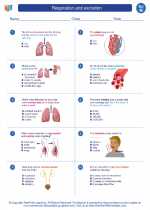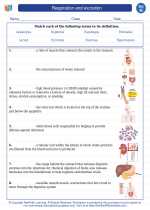Lipids
Lipids are a diverse group of organic molecules that are insoluble in water but soluble in nonpolar solvents such as ether, chloroform, and benzene. They serve several important functions in living organisms, including energy storage, insulation, and the formation of cell membranes.
Types of Lipids
There are several types of lipids, including:
- Triglycerides: These are the most common type of lipid and are composed of three fatty acid molecules bonded to a glycerol molecule.
- Phospholipids: These are major components of cell membranes and have a hydrophilic (water-attracting) head and two hydrophobic (water-repelling) tails.
- Steroids: These lipids have a characteristic four-ring structure and include hormones such as estrogen and testosterone.
- Waxes: These are long-chain fatty acids bonded to long-chain alcohols and are found in the protective coatings of plants and animals.
Functions of Lipids
Lipids play several important roles in the body, including:
- Energy Storage: Triglycerides serve as a major form of stored energy in the body, providing more than twice the energy per gram as carbohydrates or proteins.
- Insulation: Adipose tissue, which is composed primarily of fat cells, serves as insulation and helps regulate body temperature.
- Cell Membranes: Phospholipids are a key component of cell membranes, helping to control what enters and exits the cell.
- Hormone Production: Steroid hormones, such as cortisol and aldosterone, are derived from cholesterol and play crucial roles in regulating bodily functions.
Study Guide
When studying lipids, it's important to understand their structure, function, and the different types of lipids. Here are some key points to focus on:
- Identify the different types of lipids and their structures, including triglycerides, phospholipids, steroids, and waxes.
- Understand the functions of lipids in the body, including energy storage, insulation, and hormone production.
- Be able to explain the role of lipids in cell membranes and their importance for cellular function.
- Consider the impact of lipid consumption on health and the potential risks associated with high levels of saturated and trans fats.
◂Science Worksheets and Study Guides Eighth Grade. Respiration and excretion
Study Guide Respiration and excretion
Respiration and excretion  Worksheet/Answer key
Worksheet/Answer key Respiration and excretion
Respiration and excretion  Worksheet/Answer key
Worksheet/Answer key Respiration and excretion
Respiration and excretion  Worksheet/Answer key
Worksheet/Answer key Respiration and excretion
Respiration and excretion  Vocabulary/Answer key
Vocabulary/Answer key Respiration and excretion
Respiration and excretion  Vocabulary/Answer key
Vocabulary/Answer key Respiration and excretion
Respiration and excretion  Vocabulary/Answer key
Vocabulary/Answer key Respiration and excretion
Respiration and excretion  Vocabulary/Answer key
Vocabulary/Answer key Respiration and excretion
Respiration and excretion 

 Worksheet/Answer key
Worksheet/Answer key
 Worksheet/Answer key
Worksheet/Answer key
 Worksheet/Answer key
Worksheet/Answer key
 Vocabulary/Answer key
Vocabulary/Answer key
 Vocabulary/Answer key
Vocabulary/Answer key
 Vocabulary/Answer key
Vocabulary/Answer key
 Vocabulary/Answer key
Vocabulary/Answer key
